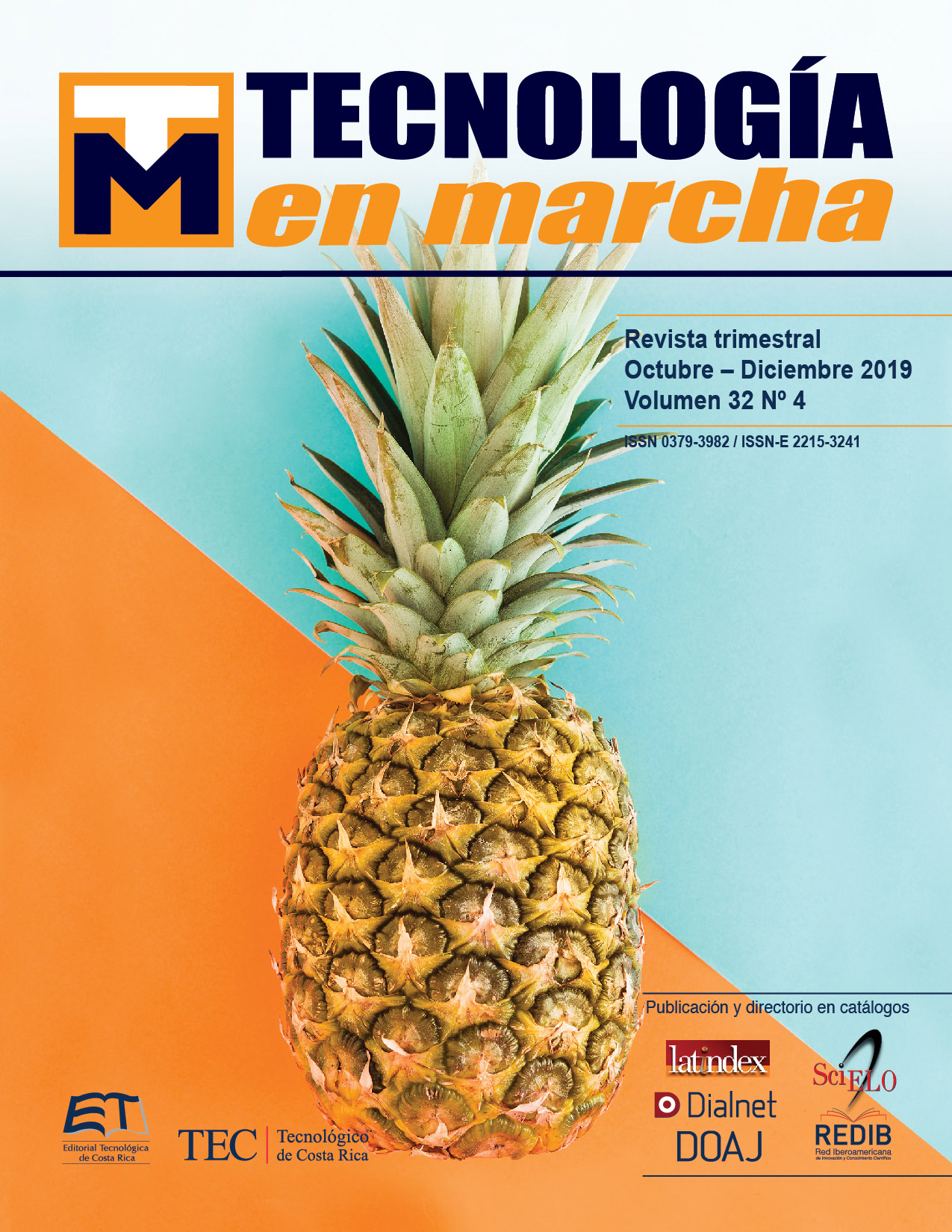Whole-Body SAR Simulations on a Prolate Spheroid Using Different Plane Wave Polarizations up to 100 GHz
Main Article Content
Abstract
This exploratory paper discusses the simulation of the whole-body specific absorption rate (SAR) on electrically large bodies. By irradiating a spheroid by means of a plane wave, the relationship between the radiated electromagnetic fields and the internal fields generated in the object can be studied. The SAR could be calculated with conventional numerical methods up to 9 GHz with the computational power available. To overcome this limit, an approach using physical optics is proposed to extend the simulation range up to 100 GHz. Preliminary results obtained indicate that this could be a good alternative for high frequency simulations; however, the generalization of the method and further validation would be required as future work.
Article Details
Los autores conservan los derechos de autor y ceden a la revista el derecho de la primera publicación y pueda editarlo, reproducirlo, distribuirlo, exhibirlo y comunicarlo en el país y en el extranjero mediante medios impresos y electrónicos. Asimismo, asumen el compromiso sobre cualquier litigio o reclamación relacionada con derechos de propiedad intelectual, exonerando de responsabilidad a la Editorial Tecnológica de Costa Rica. Además, se establece que los autores pueden realizar otros acuerdos contractuales independientes y adicionales para la distribución no exclusiva de la versión del artículo publicado en esta revista (p. ej., incluirlo en un repositorio institucional o publicarlo en un libro) siempre que indiquen claramente que el trabajo se publicó por primera vez en esta revista.
References
[2] E. Conil, A. Hadjem, A. Gati, M.-F. Wong y J. Wiart, “Influence of Plane-Wave Incidence Angle on Whole Body and Local Exposure at 2100 MHz,” IEEE Transactions on Electromagnetic Compatibility, vol. 53, nº 1, pp. 48-52, 2011.
[3] C. Lazarescu, I. Nica and V. David, “SAR in human head due to mobile phone exposure,” 2011 E-Health and Bioengineering Conference (EHB), Iasi, 2011, pp. 1-4.
[4] Mai Lu and Xiao-Yan Wu, “Study of specific absorption rate (SAR) induced in human endocrine glands for using mobile phones,” 2016 Asia-Pacific International Symposium on Electromagnetic Compatibility (APEMC), Shenzhen, 2016, pp. 1084-1086.
[5] P. Dimbylow y W. Bolch, “Whole-body-averaged SAR from 50 MHz to 4 GHz in the University of Florida child voxel phantoms,” Physics in Medicine and Biology, vol. 52, pp. 6639-6649, 2007.
[6] M. M. Búrdalo, A. Martín, M. Anguiano y R. Villar, “Comparison of FDTD-calculated specific absorption rate in adults and children when using a mobile phone at 900 and 1800 MHz,” Physics in Medicine and Biology, vol. 49, pp. 345-354, 2004.
[7] T. Nagaoka, E. Kunieda y S. Watanabe, “Proportion-corrected scaled voxel models for Japanese children and their application to the numerical dosimetry of specific absorption rate for frequencies from 30 MHz to 3 GHz,” Physics in Medicine and Biology, vol. 53, pp. 6695-6711, 2008.
[8] P. J. Dimbylow y O. P. Gandhi, “Finite-difference time-domain calculations of SAR in a realistic heterogeneous model of the head for plane-wave exposure from 600 MHz to 3 GHz,” Physics in Medicine and Biology, vol. 36, nº 8, pp. 1075-1089, 1991.
[9] M. Popović, Q. Han, and H. Kanj, “A Parallel Study of SAR Levels in Head Tissues for Three Antennas Used in Cellular Telephones: Monopole, Helix and Patch,” The Environmentalist, vol. 25, no. 2-4, pp. 233–240, 2005.
[10] N. Chahat, M. Zhadobov, L. Le Coq, S. I. Alekseev y R. Sauleau, “Characterization of the Interactions Between a 60-GHz Antenna and the Human Body in an Off-Body Scenario,” IEEE Transactions on Antennas and Propagation, vol. 60, nº 12, pp. 5958-5965, 2012.
[11] C. H. Durney, Radiofrequency Radiation Dosimetry Handbook. Springfield, VA: National Technical Information Service, 1978.
[12] E. Cocherova, J. Surda, O. Ondracek and V. Stofanik, “RF Field Orientation Influence on the Specific Absorption Rate in a Biological Object,” 2008 14th Conference on Microwave Techniques, Prague, 2008, pp. 1-3.
[13] Z. Pšenáková y M. Beňová, “Evaluation of SAR (Specific Absorption Rate) in multilayer structure of biological tissues near ear with cochlear implant,” 2017 18th International Conference on Computational Problems of Electrical Engineering (CPEE), Kutna Hora, 2017, pp. 1-3.
[14] E. Cocherova, J. Surda, J. Pucik, and V. Stofanik, “Dependence of the RF field absorption on the human body dimensions,” 2009 19th International Conference Radioelektronika, 2009.
[15] J. A. Carballo-Madrigal, H.-D. Brüns, R. Rímolo-Donadio y C. Schuster, “Full-Wave Simulation of Body Absorption due to Radiated Fields at GHz Frequencies,” Tecnología en Marcha, 2018.
[16] A. G. Canseven and N. Seyhan, “Ellipsoid models for human and guinea pigs exposed to magnetic fields,” 2003 IEEE International Symposium on Electromagnetic Compatibility, 2003. EMC ‘03., Istanbul, 2003, pp. 1227-1231 Vol.2.
[17] C. Furse, D. Christensen, and C. Durney. “Basic introduction to bioelectromagnetics,” 1st Ed. Boca Raton, Florida, USA: CRC Press, 2009.
[18] D. M. Pozar, Microwave engineering. New York, NY: Wiley, 1998.
[19] Computer Simulation Technology (CST). Microwave Studio (MWS). [Available Online]: http://www.cst.com.
[20] Electromagnetic Theory Institute, Technische Universität Hamburg (TET-TUHH). CONCEPT-II. [Available Online]: http://www.tet.tu-harburg.de/concept/.
[21] H. J. Liebe, G. A. Hufford, and T. Manabe, “A model for the complex permittivity of ice at frequencies below 1 THz,” International Journal of Infrared and Millimeter Waves, vol. 12, no. 7, pp. 677–682, 1991.
[22] G. I. Rowlandson and P. W. Barber, “Absorption of higher-frequency RF energy by biological models: Calculations based on geometrical optics,” in Radio Science, vol. 14, no. 6S, pp. 43-50, Nov.-Dec. 1979.

